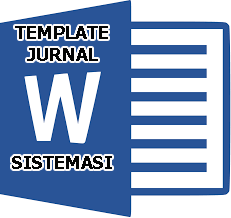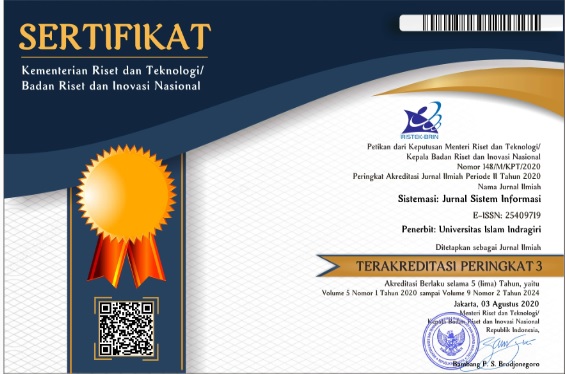Smart Clove Oil Distillation System using IoT and Ultrasonic Sensors
Abstract
Keywords
Full Text:
PDFReferences
F. M. Bahari and R. Wibowo, “Analisis Ketersediaan Bahan Baku dan Prospek Pengembangan Usaha Penyulingan Minyak Atsiri Daun Cengkeh di Kecamatan Watulimo Kabupaten Trenggalek,” UNEJ e-Proceeding, No. November, pp. 72–99, 2019.
J. N. Haro-González, G. A. Castillo-Herrera, M. Martínez-Velázquez, and H. Espinosa-Andrews, “Clove Essential Oil (Syzygium Aromaticum l. Myrtaceae): Extraction, Chemical Composition, Food Applications, and Essential Bioactivity for Human Health,” Molecules, Vol. 26, No. 21, 2021, doi: 10.3390/molecules26216387.
W. G. Maggie Lekatompessy and N. R. Timisela, “Analisis Nilai Tambah dan Strategi Pemasaran Minyak Cengkeh di Pulau Ambon,” Agribisnis Kepul., Vol. 7, No. 2, pp. 106–119, 2019.
P. Ramadhan, Minyak Agribisnis Minyak Asiri Untung Asiri Selangit. Yogyakarta: Lily Publisher, 2019.
S. S. Prasetya Ramadhan, Untung Selangit dari Agribisnis Minyak Asiri. 2018.
I. As’ad et al., “Web-Based Application for Determining Clove Oil Selling Prices using the Topsis Method,” Proc. Int. Conf. Technol. Educ. SCI., No. October, pp. 97–115, 2023.
J. K. P. Vaidya, V. Ozarkar, Y. Shirapure, and A. P. More, “Eugenol: Extraction, Properties and Its Applications on Incorporation with Polymers and Resins—a Review,” Polym. Bull., No. 80, pp. 7047–7099, 2022.
P. Sasongko, Washington, and K. G. S. Ahmadi, “Potensi Usaha Pengolahan Minyak Atsiri Daun Cengkeh di Kecamatan Sipora Selatan Kabupaten Kepulauan Mentawai,” J. Food Technol. Agroindustry, Vol. 4, No. 2, pp. 100–115, 2022.
V. A. Kumar, M. Pravitha, A. Yadav, R. Pandiselvam, and P. P. Srivastav, “Influence of Ultrasonic Application on Soybean Aqueous Extract based Composite Edible Film: Characterization and Their Food Application,” Food Hydrocoll., No. 135, 2023.
N. D. Ginoga, T. . . Katiandagho, and A. J. M. Maweikere, “Analisis Keuntungan Industri Penyulingan Minyak Daun Cengkeh di Desa Atoga Kecamatan Motongkad Kabupaten Bolaang Mongondow Timur,” Agrirud, Vol. 3, No. 3, pp. 307–314, 2021.
R. Praanggara, A. Hidayati, and Rosmilawati, “Analisis Kelayakan Usaha Penyulingan Minyak Daun Cengkeh di Desa Santong Kecamatan Kayangan Kabupaten Lombok Utara”.
L. G. A. S. Wijaya, N. L. Arpiwi, and I. A. Astarini, “Analisis Minyak Atsiri Daun Cengkeh (Syzygium Aromaticum L.) Dari Tempat Tumbuh dengan Ketinggian yang Berbeda,” Metamorf. J. Biol. Sci., Vol. 9, No. 2, p. 360, 2022, doi: 10.24843/metamorfosa.2022.v09.i02.p15.
Y. Yu, A. Safari, X. Niu, B. Drinkwater, and K. V. Horoshenkov, “Acoustic and Ultrasonic Techniques for Defect Detection and Condition Monitoring in Water and Sewerage Pipes: A review,” Appl. Acoust., Vol. 183, p. 108282, 2021, doi: 10.1016/j.apacoust.2021.108282.
Dani Anggoro and D. V. S. Y. Sakti, “Implementasi Sistem Informasi berbasis QR Code Guna mencegah Kerumunan dalam Antrian Wisuda,” Edumatic J. Pendidik. Inform., Vol. 5, No. 1, pp. 128–136, 2021, doi: 10.29408/edumatic.v5i1.3383.
Y. Ni et al., “Underwater, Multifunctional Superhydrophobic Sensor for Human Motion Detection,” Surfaces, Interfaces, Appl., 2020.
G. Qin et al., “Highly Water-stable Cd-MOF/Tb3+ Ultrathin Fluorescence Nanosheets for Ultrasensitive and Selective Detection of Cefixime,” Talanta, Vol. 221, No. July 2020, p. 121421, 2021, doi: 10.1016/j.talanta.2020.121421.
M. Annalakshmi, S. Kumaravel, S.-M. Chen, P. Balasubramanian, and T. S. T. Balamurugan, “A Straightforward Ultrasonic-Assisted Synthesis of Zinc Sulfide for Supersensitive Detection of Carcinogenic Nitrite Ions in Water Samples,” Sensors Actuators B Chem., Vol. 305, 2020.
K. Talbi, A. El Ougli, B. Tidhaf, and H. Zrouri, “Low-Cost Real-Time Internet of Things-based Monitoring System for Power Grid Transformers,” Int. J. Electr. Comput. Eng., Vol. 13, No. 3, pp. 2579–2588, 2023, doi: 10.11591/ijece.v13i3.pp2579-2588.
I. Israwati, Y. Yusriadi, and N. Nurhaedah, “Analisis Pendapatan Usaha Penyulingan Minyak Daun Cengkeh di Desa Buntu Barana Kecamatan Curio Kabupaten Enrekang,” J. Ilm. Ecosyst., Vol. 21, No. 2, pp. 304–316, 2021, doi: 10.35965/eco.v21i2.1102.
Nur-A-Alam, M. Ahsan, M. A. Based, J. Haider, and E. M. G. Rodrigues, “Smart Monitoring and Controlling of Appliances using Lora based IoT System,” Designs, Vol. 5, No. 1, 2021, doi: 10.3390/designs5010017.
Y. Ni et al., “Underwater, Multifunctional Superhydrophobic Sensor for Human Motion Detection,” ACS Appl. Mater. Interfaces, Vol. 13, No. 3, pp. 4740–4749, 2021, doi: 10.1021/acsami.0c19704.
P. Saraswathi, M. Prabha, K. S. Vijay Ananth, M. Ezhumalai, and R. Akchaykumar, “Hazardous Gas Monitoring in Drainage using IoT,” 2nd Int. Conf. Emerg. Trends Inf. Technol. Eng. ic-ETITE 2024, pp. 1–6, 2024, doi: 10.1109/ic-ETITE58242.2024.10493301.
A. Majid, Jamaaluddin, A. Wiguna, H. Setiawan, and A. Farihah, “Development of an Automatic Water Flow Sensor System using ESP32 for Efficient Water Control,” IOP Conf. Ser. Earth Environ. Sci., Vol. 1242, No. 1, 2023, doi: 10.1088/1755-1315/1242/1/012016.
X. Tang, M. Xiao, and B. Hu, “Application of Kalman Filter to Model-based Prognostics for Solenoid Valve,” Soft Comput., Vol. 24, No. 8, pp. 5741–5753, 2020, doi: 10.1007/s00500-019-04311-w.
P. Saraswathi, M. Prabha, B. Dhiyanesh, R. A. Kumar, J. B. Ahamed, and M. M. Ismail, “IoT-Powered Solution for Proactive Air Quality Management,” 2024.
S. Rahastama, A. L. Pratama, M. J. Dwiyanto, A. K. Mahera, and Waangga, “The Design of an IoT based Traffic Monitoring Device using ESP32 Microcontroller with Mini LiDaR and Ultrasonic Sensor,” in AIP Conference Proceedings, 2024, Vol. 3076, No. 1.
D. Yue, L. Li, L. Wei, Z. Liu, C. Liu, and X. Zuo, “Effects of Pulse Voltage Duration on Open–Close Dynamic Characteristics of Solenoid Screw-in Cartridge Valves,” Processes, Vol. 9, No. 10, pp. 1–15, 2021, doi: 10.3390/pr9101722.
DOI: https://doi.org/10.32520/stmsi.v14i5.5232
Article Metrics
Abstract view : 766 timesPDF - 22 times
Refbacks
- There are currently no refbacks.

This work is licensed under a Creative Commons Attribution-ShareAlike 4.0 International License.









